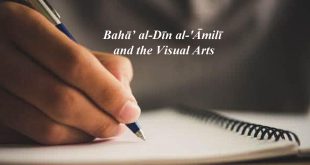Recognition of truth from falsehood is not determined by the fewness or plentitude of followers. Today the Muslims compared to the non-Muslims in the world constitute one-fifth or one-sixth.
Idol-worshippers, cow-worshippers and all those who do not believe in the supernatural constitute the bulk of people in the Near East.
With a population of more than one billion, China is part of the atheistic camp of communism, and in India, which has a population of about one-billion the cow-worshippers and idol-worshippers are in the majority.
Majority is not the criterion of soundness. The Glorious Qur’an often disapproves majorities and praises some minorities. Here are some examples:
ولا تجد أكثرهم شاكرين
“And You will not find most of them to be grateful.”[1]
إن أولياؤه إلا المتقون ولكن هُم أكثرهم لا يعلمون
“Its custodians are only the God-wary, but most of them do not know.”[2]
وقليل من عبادي الشكور
“And few of My servants are grateful.”[3]
Therefore, a realistic person should by no means fear for the fewness of the followers of his creed nor take pride in their plentitude. One would rather light the lamp of one’s reason and take benefit from its light and radiance.
Once a man asked the Commander of the Faithful ‘Ali (‘a): “How could it be that your opponents in the Battle of Jamal, who are relatively in majority, be false?
The Imam (‘a) said:
“إن الحق والباطل لا يعرفان بأقدار الرجال ، إعرف الحق تعرف أهله إعرف الباطل تعرف أهله”
“Truth and falsehood are not recognized through the number of men. If you know the truth you can know its followers and if you know falsehood you can know its followers.”
It is necessary for every Muslim to analyze this question in a scientific and logical manner, and take the following verse as a lamp to illuminate his or her path:
ولا تقفُ ما ليسن لك به علم
“Do not follow that of which you have no knowledge.”[4]
In addition, although the Shi‘ah cannot match the Ahl as-Sunnah in number, if a precise counting is made, we will see that the Shi‘ah constitute one-fourth of the Muslim population in the world, living in the Muslim-populated parts of the world.[5] There have been famous writers, scholars and authors of literary works and treatises from among the Shi‘ah throughout history. It is worth noticing that the founders of Islamic sciences have been mostly Shi‘ah, among whom are:
- Abu’l-Aswad Da’ili, the founder of Arabic syntax {‘ilm an-nahu};
- Khalil ibn Ahmad, the founder of Arabic prosody {‘ilm al-‘arud};
- Mu‘adh ibn Muslim ibn Abi Sarah al-Kufi, the founder of the Arabic etymology {‘ilm as-sarf}; and
- Abu ‘Abd Allah Muhammad ibn ‘Umran Katib Khorasani (Marzbani), one of the forerunners of Arabic eloquence {‘ilm al-balaghah}.[6]
For more information about the number of the works written by Shi‘ah ‘ulama’ and scholars which are too many to count, one may see the valuable book, Adh-Dhari‘ah ila Tasanif ash-Shi‘ah, and for familiarity with great Shi‘ah figures, one may read A‘yan ash-Shi‘ah, and Tarikh ash-Shi‘ah for familiarity with the history of the Shi‘ah.
———————————————————————————————
References
[1] Surah al-A‘raf 7:17.
[2] Surah al-Anfal 8:34.
[3] Surah Saba’ 34:13.
[4] Surah al-Isra’ (or Bani Isra’il) 17:36.
[5] For a detailed explanation, see A‘yan ash-Shi‘ah, vol. 1, bab 12, p. 194.
[6] In this regard, one may refer to Ta’sis ash-Shi‘ah by Sayyid Hasan as-Sadr.
 Ijtihad Network Being Wise and Faithful Muslim in the Contemporary World
Ijtihad Network Being Wise and Faithful Muslim in the Contemporary World
